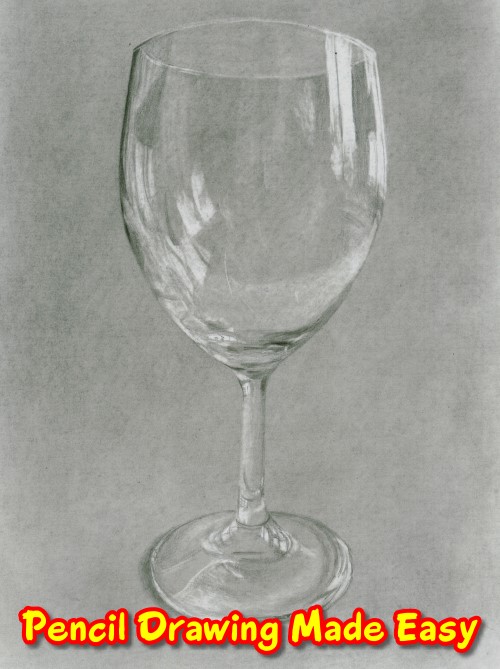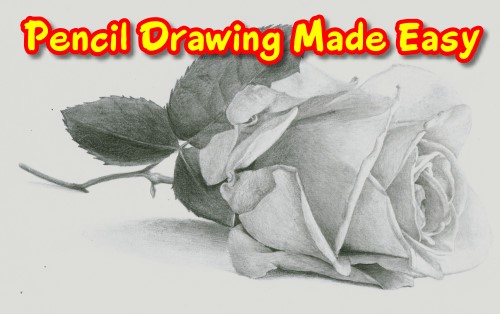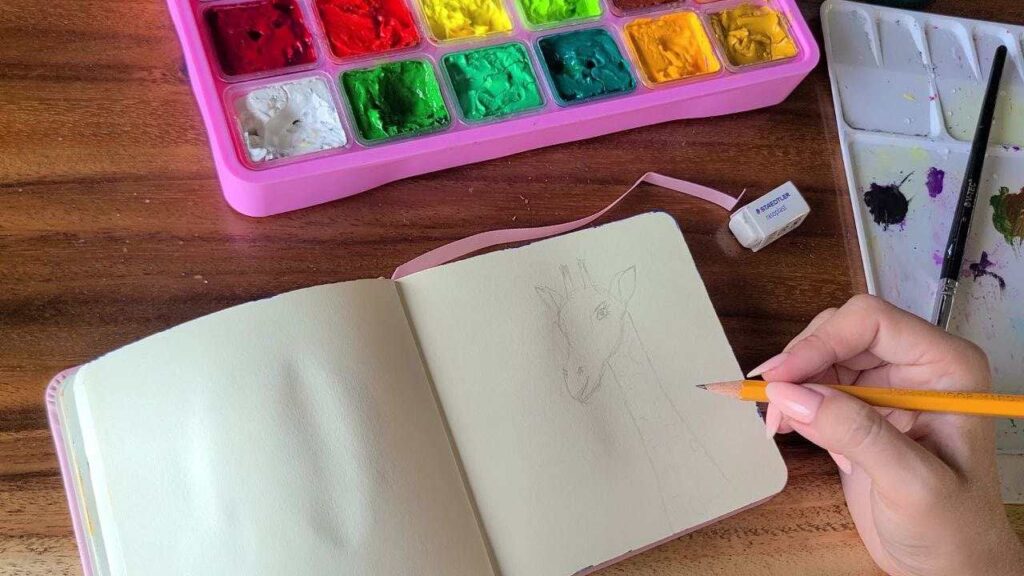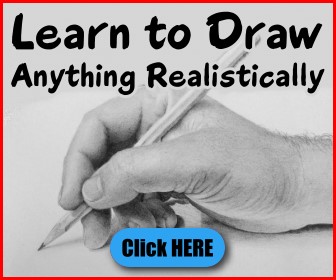Last Updated on March 11, 2024 by Masha Eretnova
Have you ever looked at beautiful drawings and thought, “I wish I could do that too!” But then that little voice in your head says, “I’m just not talented enough.”
Well, guess what? You’re not alone!
Lots of people feel that way. They believe that drawing is only for those with natural talent or special skills.
But don’t worry! I’m going to explore this question: Is drawing a talent or skill? is it something you’re born with, or can anyone learn it?
I’ll show you that with the right attitude and a bit of practice, drawing is something you can totally do! So, let’s dive in and find out how you can unlock your inner artist and start drawing like a pro.
Spoiler: I think dedication, passion and practice are more valuable than talent and practically anyone can create drawings.
Table of Contents
This article contains affiliate links. It means no extra cost for you but a little commission (2-3%) for me to support my hobby and blog. Thank you!
Is drawing a talent or skill?
Drawing can be considered both a talent and a skill, but it’s essential to understand the distinction between the two.

What is Talent?
Talent refers to a natural aptitude or inclination for a particular activity or skill.
Some people may have an inherent talent for drawing, which means they might find it easier to pick up drawing techniques, have better hand-eye coordination, or possess a natural sense of aesthetics.
These inherent qualities can provide a head start in the artistic domain, allowing some people to produce impressive drawings with relatively little formal training.
Yet, I think exceptional talent that doesn’t need any practice or learning is extremely rare case.
Drawing skills
Skill, on the other hand, is developed through learning, constant practice, and experience.
It is the ability to perform a specific task proficiently, which improves with effort and dedication.
Even if someone does not have a natural talent for drawing, they can still become skilled artists by studying various techniques, practicing regularly, receiving feedback, and learning from mistakes.
But even if someone thinks they already got talent, they still have to polish the skill and practice.
So the practice part will make the difference no matter how much or little talent you think you have.
Ultimately, I consider drawing to be primarily a skill that can be cultivated and improved through hard work and perseverance.
In many cases, kids or adults with a natural talent for drawing might progress faster in the early stages of their artistic journey.
However, someone without an obvious talent can easily catch up and surpass them with dedicated practice and a strong commitment to learning.
Both talent and skill play a role in an artist’s development, but dedication and hard work are vital for achieving mastery in drawing.
To me the drawing is definitely a skill.
Think about people who lost their hands and arms due to a tragedy. Some of them loved art and some of them never touched a pencil, but they can learn to use toes or mouth to draw and paint!
I admire them and their dedication and positive attitude and willingness to turn things around.

Join My Curated Community For New Artists
Get Weekly Advice for your artist career
What type of skill is drawing?
Drawing is considered both a technical skill and a creative skill.
- Drawing is a Technical Skill as it requires a set of technical abilities and techniques to accurately represent objects, scenes, or ideas on paper. These technical skills include understanding proportions, perspective, shading, composition, and using various drawing tools effectively.
- Drawing is also a Creative Skill because it involves expressing ideas, emotions, and imagination through art.
In some way, you can say that illustrators and artists also have problem-solving skills as we often need to figure out something 🙂
Is drawing inherited?
A person can have inborn inclination to draw and paint but the practice and hard work will determine if he’she will be successful in it.
The concept of drawing as an “inherited skill” is a bit nuanced.
Drawing ability can have some genetic components, but it is not purely an inherited skill like certain physical traits (e.g., eye color, height).
Genetics may play a role in certain aspects of drawing:
- hand-eye coordination – a person with excellent hand-eye coordination may find it easier to translate their ideas onto paper
- visual perception, and
- spatial reasoning
- Synesthesia (when you see colors listening to music or sounds)

Genes NRG1, COMT, dopaminergic, serotoninergic and a few mutations are said to be related to creativity but scientists say that our childhood, environment, course of life, desires, fearlessness, space, and time impact the creativity level just as much and nothing is completely predetermined.
At the same time, researchers tell us that sometimes creativity can also be related to some mental disorders and altruism.
Although we think of art and creativity as something etheral, brain determines our creative activities a lot.
Convergent thinking, the ability to make associations, abstract thinking and some more were proved to be related to creativity and drawing skills but not related to intelligence.
Regardless of initial predispositions, anyone can improve their drawing skills through practice, study, and guidance.
People who receive proper instruction, engage in regular practice, and explore different techniques can significantly enhance their drawing abilities, even if they didn’t have an obvious natural talent at the beginning.
Interesting fact: people with Parkinson’s disease have increased creativity and interest in visual arts
Is drawing talent determined by the environment?
Apart from genetics, how good we are at drawing can be affected by what is around us.
Experts and researchers point some factors in our environment that can determine whether we will draw at all and how good we will do so:
- exposure to an artistic household
- parenting style
- birth order
- physical surroundings
I would personally add that interest in art and drawing is something that for me was a hobby at a very young age. I’m sure my parent believed it was some artistic talent.
It was encouraged by my father and I believe that what made it stick.

However, going through school and university, there were very little accents of anything art-related and lots of time dedicated to studies and “something serious” like foreign languages so I only returned to painting as an adult.
Evolving I would definitely say that visiting art galleries, museums, watching videos about art theory, even design and cinematography practices made many things clearer and interesting to me.
Is being an artist a natural talent?
Being an artist is not solely dependent on natural talent, although having certain innate inclinations can certainly provide a head start.
I would personally say that natural talent will play a very little role in being an actual, successful, artist.
Talented artists still spend hours on creating their work and finding their personal style. If it was just the talent, any art school will have no students.
I also think that the idea of dominance of people who are naturally gifted may be detrimental. It will lead to entitlement.
As with many creative pursuits, being an artist involves in fact, a whole combination of factors, including:
- Natural ability: a keen sense of observation, heightened visual perception, creativity, hand-eye coordination, and an innate understanding of aesthetics, introversion. These predispositions can be seen as natural talents that give a foundation for artistic expression but not necessarily.
- Skill Development: While natural talent can provide advantages, becoming a skilled artist requires continuous learning and practice. We know the theory of 10 000 hours, well it applies to academic arts as well. Artistic skills can be cultivated through study, experimentation with various techniques, receiving feedback, and putting in hours of dedicated work. Artists often undergo years of training and refinement to develop their craft until they find their unique style.
- Passion and Dedication: Passion for art and a genuine interest in the creative process play a crucial role in becoming an artist. The dedication to keep pushing boundaries, facing challenges, and persisting through setbacks is what drives many artists to continually improve their skills and express themselves through their work. And it is truly important as many times being an artist doesn’t bring popularity, money or any praise and you just have to stick to it despite the challenges. You can only do so if you are passionate about art.
- Personal Vision and Expression: An essential aspect of being an artist is the ability to convey one’s unique vision and perspective through their art. This goes beyond technical skills and involves self-expression, storytelling, and communicating emotions and ideas through the chosen medium. It also involves deep self-reflection and great observation skills, especially for those who draws and paints socially charged works.
- Artistic Community and Influence: Artists are often inspired and influenced by their artistic community, mentors, and exposure to various forms of art. Surrounding yourself with fellow artists and illustrators, attending workshops, and studying the work of others can significantly impact an artist’s growth.
I believe becoming a successful artist requires a combination of talent, skill development, passion, personal expression, and immersion in the artistic community.
Dedication and hard work are essential for an artist’s growth and success, regardless of any initial talent they may have.
Read also: How to be a Successful Artist: Tips and Strategies for Building a Thriving Career
Is drawing skill a rare skill?
Drawing as a basic ability is widespread, but more advanced artistic drawing skills may be less common.
Drawing is a skill that varies in prevalence depending on the context and the level of expertise.
It is not a rare skill naturally, but it is rare to find exceptionally realistic drawings as it takes lots of time to master it.

Here are a few points to consider when you think that drawing is a rare skill:
- Universal Ability: Drawing, in its basic form, is a universal human ability. Most people can draw to some extent, even if it’s just simple doodles or basic representations. Children, in particular, often engage in drawing as a form of expression and exploration without even thinking that it is a special skill.
- Artistic Skill: However, when it comes to more advanced or artistic drawing skills, not everyone possesses them. Like any skill, artistic drawing requires training, practice, and dedication. If that child keeps drawing, it will be much better skill in adult life.
- Interest and Opportunity: The prevalence of skilled artists also depends on the level of interest and opportunity within a given community. In communities with a strong emphasis on arts and culture, there may be a higher number of skilled artists due to the presence of supportive environments, art schools, and resources. So in art community drawing is not a rare skill, but maybe if you ask professional basketball players it will be rarer as they have a completely different focus skill they need to practice.
- Digital Age Impact: With the advent of technology and digital art tools, drawing has become more accessible to a broader audience. You can draw on your iPad and it will look amazing!
- Subjective drawing Skill: the perception of what constitutes “good” drawing is very subjective.
can I learn to draw if I have no talent? Tips From talented artists And Not
Absolutely, you can learn to draw even if you feel you have no natural talent!
As mentioned earlier, drawing is primarily a skill that can be developed and improved through practice and learning.
Here are some tips to learn drawing:
- Start with the Basics: Begin with fundamental drawing exercises that focus on lines, shapes, and forms. Practice basic shapes like circles, squares, and triangles to improve your hand-eye coordination.
- Take Beginner Drawing Classes: Consider enrolling in a beginner drawing class or finding online tutorials. Formal instruction can provide you with a structured approach to learning and help you understand essential drawing techniques. Teachers often have simple tips how to improve your skills.
- Draw Regularly: Set aside time for regular drawing practice. Like any skill, consistent practice is key to improvement. Even drawing for just a few minutes each day can make a significant difference over time. Pick smaller paper size so you canfinish within 15-30 minutes.
- Study Different Techniques: Explore various drawing techniques and styles. Experiment with different mediums, such as graphite, charcoal, pen, or digital tools. Learning about shading, perspective, and composition is the next step in your drawing abilities.
- Observe and Learn from Others: Study the work of other artists and observe how they approach drawing. Pay attention to their techniques and try to replicate certain elements to understand how they achieve certain effects. The easiest way to do so is to simply watch free YouTube videos.
- Seek Feedback: Don’t be afraid to share your work with others, whether it’s friends, family, or online communities. Constructive feedback can provide valuable insights and help you identify areas for improvement. If you aren’t comfortable sharing with family, join some beginners Facebook groups. I love the atmosphere there, everyone is very supportive and friendly.
- Be Patient and Persistent: Learning to draw is a gradual process, and improvement may not be immediate. Stay patient and persistent in your practice, and celebrate the progress you make along the way. At the same time, if you realized it’s not something you’d like to do, well don’t! Either choose a different art medium or keep looking for a perfect hobby. Drawing can be a transitional hobby and that’s perfectly fine (be kind to yourself).
Same goes for painting. I strongly believe you can learn to paint and paint with acrylic or gouache with no talent.
best books and courses to learn drawing
Great beginner-friendly and affordable (or free) classes to learn how to draw are wide available. There are also many simple books to learn the basics or directly draw something specific.
Drawing Books:
- You Can Draw in 30 Days (general guide)
- How to Draw Faces and Portraits for Beginners (focus on portraits and faces – toughest things to draw for me and I know many people struggle with it!)
- Perspective Made Easy (specific focus on learning to draw perspective)
- Light, Shade and Shadow (learn the basics of working with lights and shadows – much needed skills for realistic drawing!)
- Drawing for the Absolute Beginner (general guide)
- “Drawing on the Right Side of the Brain” by Betty Edwards – a classic book that will also tackle is the drawing is a skill or a talent and how to get excited about drawing.
- “Keys to Drawing” by Bert Dodson – A comprehensive guide that covers various drawing techniques, exercises, and tips for beginners and intermediate artists.
- How to Draw What You See by Rudy De Reyna – This book helps breakcomplex objects we see in simpler shapes and successfully draw them. A classic bookon drawing.
- Figure Drawing (how to understand human anatomy and draw realistic people).
Drawing Courses:
- Pencil Drawing Made Easy
- Proko Drawing Course
- DrawSpace – online platform that teaches drawing
- The Ultimate Drawing Course
- Ava Moradi has a fewdrawing courses on Skillshare for very specific topics
- LinkedIn Drawing Foundations course
FREE resources:
- Youtube series Learn to Draw
- This whole Youtube channel is dedicated to teach you how to draw for free
- You can join Skillshare for free for 1 month and pick as many drawing classes as you wish.
- There are some free drawing classes on Udemy
- Toad Hollow Studio articles on drawing
- Free beginners course
Dali anecdote
Dalí was once having lunch in a Parisian café doodling on a napkin. A lady was watching him and she knew it’s Dali.
Wheh he finished he crumpled the drawing and almost threw it away.
A woman then quickly approached him and said she would buy the drawing.
But Dali wouldn’t sell it for anything less than $40,000.
—-“But it only took like 30 seconds to draw!” the woman exclaimed.
—-“No, ma’am, This drawing took me 30 years.
Salvador Dali
Final Thoughts
Remember that learning drawing is an ongoing process, and practice is crucial.
I think the most common reason people who say it’s just talent is that they only see the tip of the iceberg of what it means to be an artist.
I do believe that anyone who can buy and hold a pencil, even with your toes, can learn to draw in their own style if they are truly passionate about it.
It’s beneficial to use a combination of real practice, watching videos, reading books and taking courses to get a well-rounded education in drawing techniques and principles.
I would add – seek opportunities to apply what you learn and regularly challenge yourself with new drawing projects 🙂

Masha Eretnova, born in 1991, is a Buenos Aires-based certified teacher, artist, and member of the Professional Artist Association with 20+ years of personal painting journey.
She started painting and drawing very early and is now an international abstract artist and educator passionate about acrylic painting, gouache, and crafts.
Her works are part of international exhibitions and contests, including ArtlyMix (Brazil), Al-Tiba 9 (Spain), Exhibizone (Canada), Italy, and many more.
Besides her artistic pursuits, Masha holds a post-grad diploma in Teaching Film Photography and 2 music school diplomas: piano and opera singing.
Last update on 2024-07-27 / Affiliate links / Images from Amazon Product Advertising API


